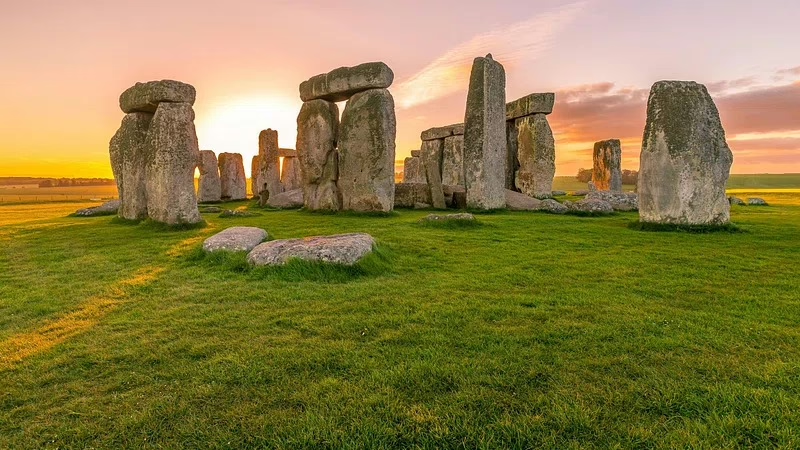Table of Contents
Scottish Paganism is a rich and complex spiritual tradition that draws from both Celtic and Norse influences. Rooted in the ancient landscapes of the Scottish Highlands, islands, and glens, this form of Paganism carries echoes of tribal clans, elemental reverence, ancestral worship, and the mystical forces of nature. While often categorized broadly under the Celtic Pagan umbrella, Scottish Paganism is unique in its synthesis of two powerful mythological and cultural streams. The Celtic traditions of the indigenous Picts and Gaels blend seamlessly with the Norse practices brought by Viking settlers and raiders, creating a spiritual landscape that is both diverse and deeply rooted in history.
Understanding Scottish Paganism
To understand Scottish Paganism, it is important to begin with its Celtic origins. The Celts were an Indo-European people who arrived in what is now Scotland several centuries before the Common Era. They brought with them a polytheistic religion centered around nature spirits, sacred groves, animism, and a pantheon of deities who represented natural forces, tribal values, and cosmic cycles. Central figures in Celtic Paganism include the goddess Brigid, a deity associated with healing, poetry, and smithcraft, as well as Cernunnos, the horned god of fertility and the wild. Sacred symbols such as the triskele, the Celtic knot, and the spiral were all reflective of the deep reverence for cycles, balance, and interconnectedness.
Picts
Alongside the Celts were the Picts, an ancient people native to northeastern Scotland whose religious practices are less clearly defined but equally significant. Pictish standing stones and carvings depict symbolic animals, warrior figures, and abstract motifs, all of which suggest a strong animistic and shamanic spiritual tradition. The Picts were eventually assimilated into the Gaelic culture that became dominant in medieval Scotland, but many modern Scottish Pagans honor the Pictish legacy as a foundational element of their spiritual path.
Norse Influences
The Norse influence arrived several centuries later during the Viking Age. From the eighth to the eleventh centuries, Norse raiders and settlers made their way into the northern and western regions of Scotland, including the Shetland and Orkney Islands, the Hebrides, and parts of the mainland. With them came the gods of Asgard, including Odin, Thor, Freya, and Loki, as well as the powerful cosmology of Yggdrasil, the nine worlds, and the runic alphabet. Rather than displacing the existing Celtic beliefs, the Norse traditions were often integrated into local customs, resulting in a unique syncretism that continues to shape Scottish Paganism today.
Blending Influences
One of the more striking examples of this blending is found in the folklore of the Scottish Isles. Stories of selkies, kelpies, and faerie beings show both Celtic and Norse influences. The Norse belief in shape-shifting and magical creatures like the draugr or landvaettir can be seen mirrored in Scottish tales of supernatural beings who dwell near water, in the hills, or under the earth. Seasonal festivals in Scotland also show this cultural fusion. While Imbolc, Beltane, Lughnasadh, and Samhain are clearly rooted in the Celtic Wheel of the Year, their local expressions often include customs that bear resemblance to Norse solstice observances and rituals.

Modern Scottish Paganism is a living, evolving tradition. Many contemporary Pagans in Scotland and around the world are reclaiming and reconstructing ancestral practices by studying historical records, folklore, archaeology, and mythology. This effort includes the revival of old festivals, the use of sacred symbols, and the honoring of both Celtic and Norse deities. For example, it is not uncommon for a modern Scottish Pagan to celebrate Beltane with a bonfire ritual to honor Brigid, while also making offerings to Thor for protection or Odin for wisdom. This inclusive and eclectic approach reflects the reality of Scotland’s historical and cultural intersections.
Land Connections
Another hallmark of Scottish Paganism is its deep connection to land and place. Sacred sites such as Callanish on the Isle of Lewis, Clava Cairns near Inverness, and the Ring of Brodgar in Orkney are pilgrimage destinations for those seeking spiritual connection. These places serve not only as archaeological treasures but also as portals into the mythic imagination and spiritual consciousness of the ancient peoples who once worshiped there. Modern practitioners often engage in earth-based rituals, guided meditations, and land acknowledgment practices to foster a personal relationship with the land and its spirits.
Language also plays a role in the spiritual revival. The Gaelic language, once in danger of extinction, is experiencing a cultural resurgence and is often used in rituals, chants, and prayers. Some Scottish Pagans are also exploring the Old Norse language as a way to connect with the Viking elements of their spiritual lineage. This linguistic revival is part of a broader movement to decolonize and indigenize spiritual practices by rooting them in the authentic cultural expressions of the Scottish people.
Scottish Paganism is a beautiful and multifaceted spiritual tradition that embodies the essence of both Celtic and Norse heritage. It is not a frozen relic of the past but a living path that continues to evolve. By honoring the gods and goddesses of both traditions, embracing the wisdom of folklore, reconnecting with sacred landscapes, and preserving indigenous languages and customs, modern Scottish Pagans are weaving a tapestry of reverence and resilience. This blend of traditions not only enriches individual spiritual practice but also contributes to a broader cultural revival that celebrates Scotland’s diverse and sacred roots.
